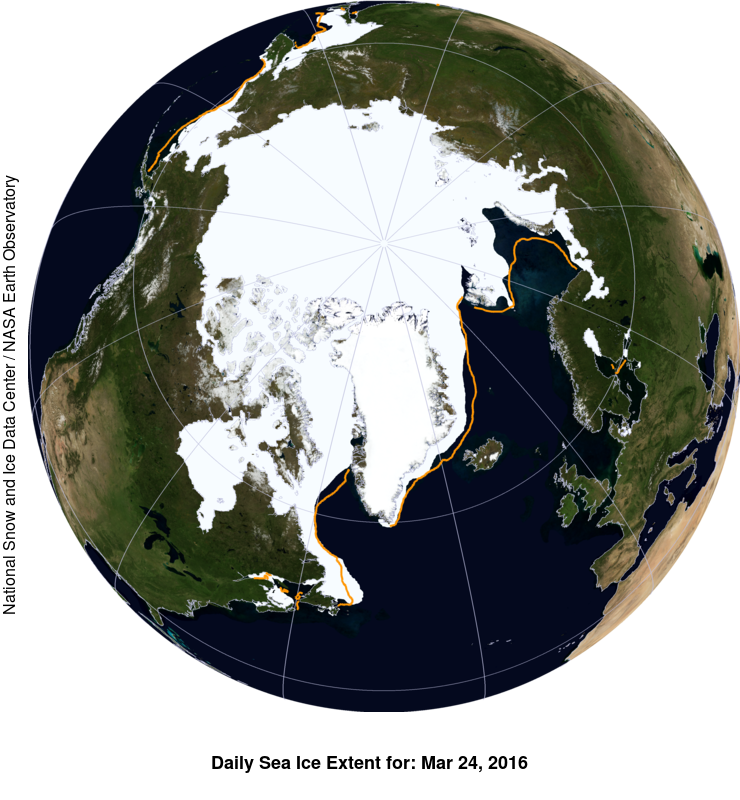Scientists say warm winter weather around the circumpolar north has led to another record-setting year of decreasing sea-ice coverage of the Arctic Ocean. The extent of sea ice formed over this past winter fell short of the previous record-low extent set last year.

National Snow and Ice Data Center Director Mark Serreze struggled for words a few weeks ago to describe the warmest of last winter’s weather.
“It was just crazy warm,” Serreze said. “I’ve never really seen anything like it.”
Scientists with the center again cited the weird weather Monday, when they announced the amount of sea ice that formed over the winter in the Arctic Ocean was for a second year far below average – the average based on when the center began satellite-monitoring sea ice in 1981.
“You know if I look at December, January, February average air temperatures, over the poles they’re almost 12 degrees Celsius [about 54 degrees Fahrenheit] above normal,” said Julienne Stroeve, a senior research scientist with the center. “That’s a huge anomaly in the temperatures for the Arctic.”
Julienne Stroeve is a senior research scientist with the center, and she says some of that warmth came from El Nino and “The Blob” – the mass of warm-water that parked in the North Pacific late last year.
Stroeve says those phenomena won’t be present next year, so it seems unlikely the sea-ice extent at the end of next winter will set another record. But she says the overall trend is clear.
“The long-term warming from increasing greenhouse gases in the atmosphere – all climate models that we’re going to continue to lose the sea ice,” Stroeve said.
The Denver-based National Snow and Ice Data Center says sea-ice extended an average of 5.6 million square miles over the Arctic Ocean as of Thursday. That’s about 5,000 square miles less than last year’s maximum sea-ice extent.
Serreze, the center director, says that suggests the sea-ice minimum, recorded at the end of summer, may also break that record, set in 2012.
“Where it sits in the record books depends on the summer weather pattern,” said Serreze. “And we just can’t predict that.”
The center will issue its report on the minimum sea-ice extent in September.
Tim Ellis is a reporter at KUAC in Fairbanks.




